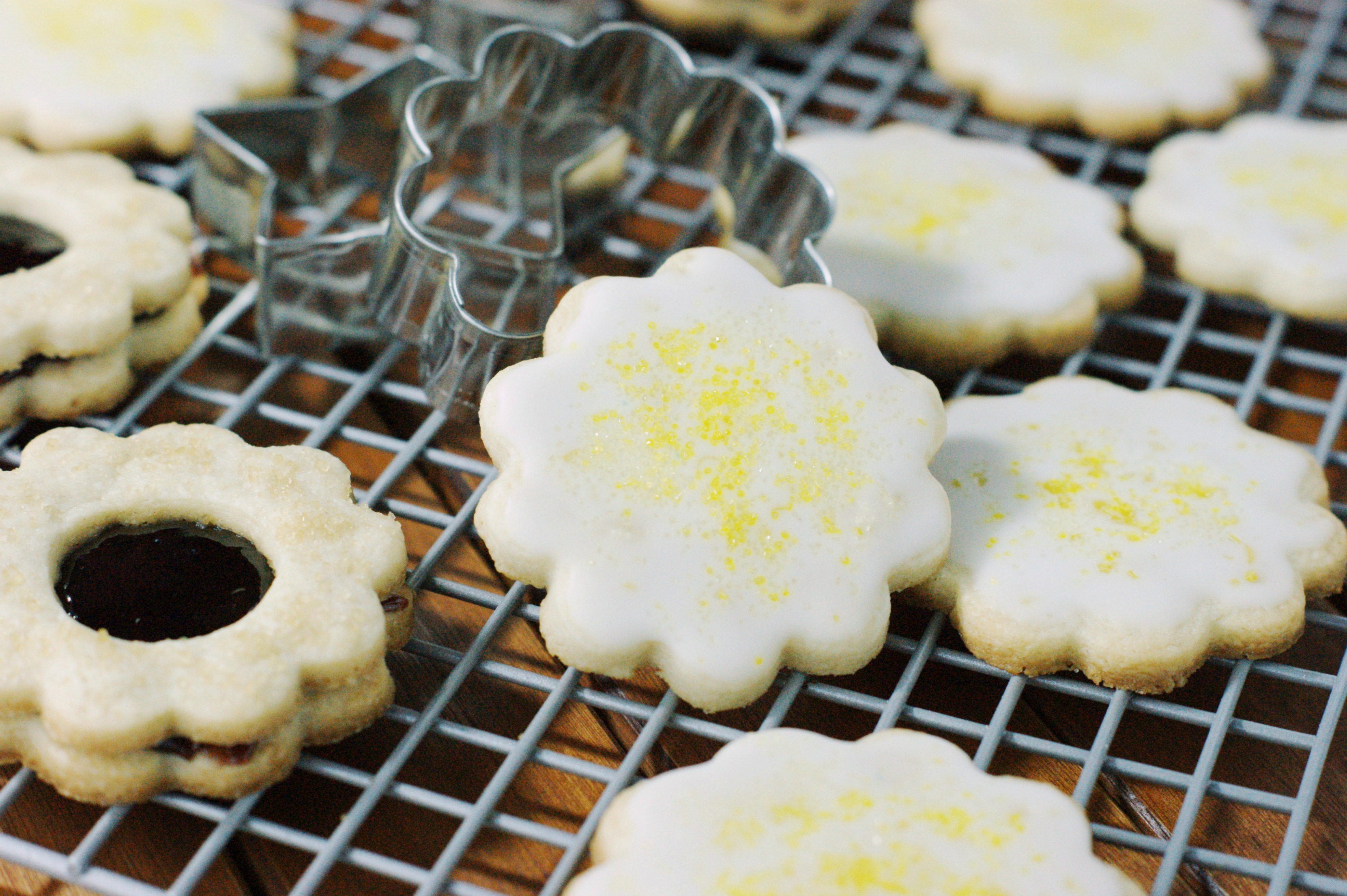
How to Roll & Cut Cookie Dough
Chilled dough is the secret to perfect ready-to-be-shaped cookies.
Rolling and cutting out cookies is a holiday tradition for a reason: It’s so much fun! Make those cookies stay in their perfect shape with these easy tricks and tips.
1 Chill the Dough in Disks

The single biggest thing to keep in mind when making cut-out cookies is to chill the dough and keep it chilled throughout the rolling and cutting process. After mixing your cookie dough, the first step is to give the dough its first chill. But rather than just sticking the mixing bowl with a big lump of dough in the fridge, first use your hands to press the dough into two equal-size disks.
Wrap each disk in plastic wrap and place the disks in the refrigerator to chill for about 15 minutes.
2 Roll Out the Dough

Next take the disks, one at a time, out of the fridge and roll to the thickness specified in your recipe.
When it comes to the rolling, there are a couple of ways to go. The dough can be rolled out on a floured work surface or a non-floured surface.
For a floured surface, use as little flour on the surface and rolling pin as possible. Introducing extra flour can toughen the dough and affect the texture of the finished cookies. Consider using confectioners' sugar instead, as it won't toughen the dough like flour can.
3 Cut the Dough

One thing to remember when cutting cookies: Be sure to cut the shapes close together to minimize dough scraps. While scraps can be re-rolled, they should be re-rolled only once. Rolling dough over and over creates overworked dough, leading to tough baked cookies.
To cut, lay a cookie cutter on the dough, firmly press straight down and lift straight back up without twisting or sliding the cutter. When lifting the cutter, use your finger or a chopstick to gently press on smaller or more detailed areas to help release the dough. If the cutter is sticking, dip the edges in confectioners' sugar before cutting.
4 Peel Away Scraps

Once the shapes are cut, peel away the dough scraps. With the extra dough out of the way, it's easier to lift the cut cookies without stretching or squishing the shapes.
5 Lift the Cookies

If the dough is still chilled and firm enough, the cookies can be lifted by hand and placed on a baking sheet without distorting the shapes. If the dough has warmed and softened a bit, use a thin, flexible spatula to gently lift the cookies. Use your free hand to give additional support to the shapes while transferring them to the baking sheet.
6 Ready to Bake

Bake the cookies as your recipe directs, letting them cool for 2 to 3 minutes on the pan before removing them. Cool your baking pans to room temperature between batches. Placing cut cookies on warm pans causes flattening and can distort the shapes.
Find more helpful how-tos here »
Plus: Get an easy sugar cookie recipe »
Don't Miss:
• How to Melt Chocolate »
• How to Make Fondant »
• How to Cook a Ham »
